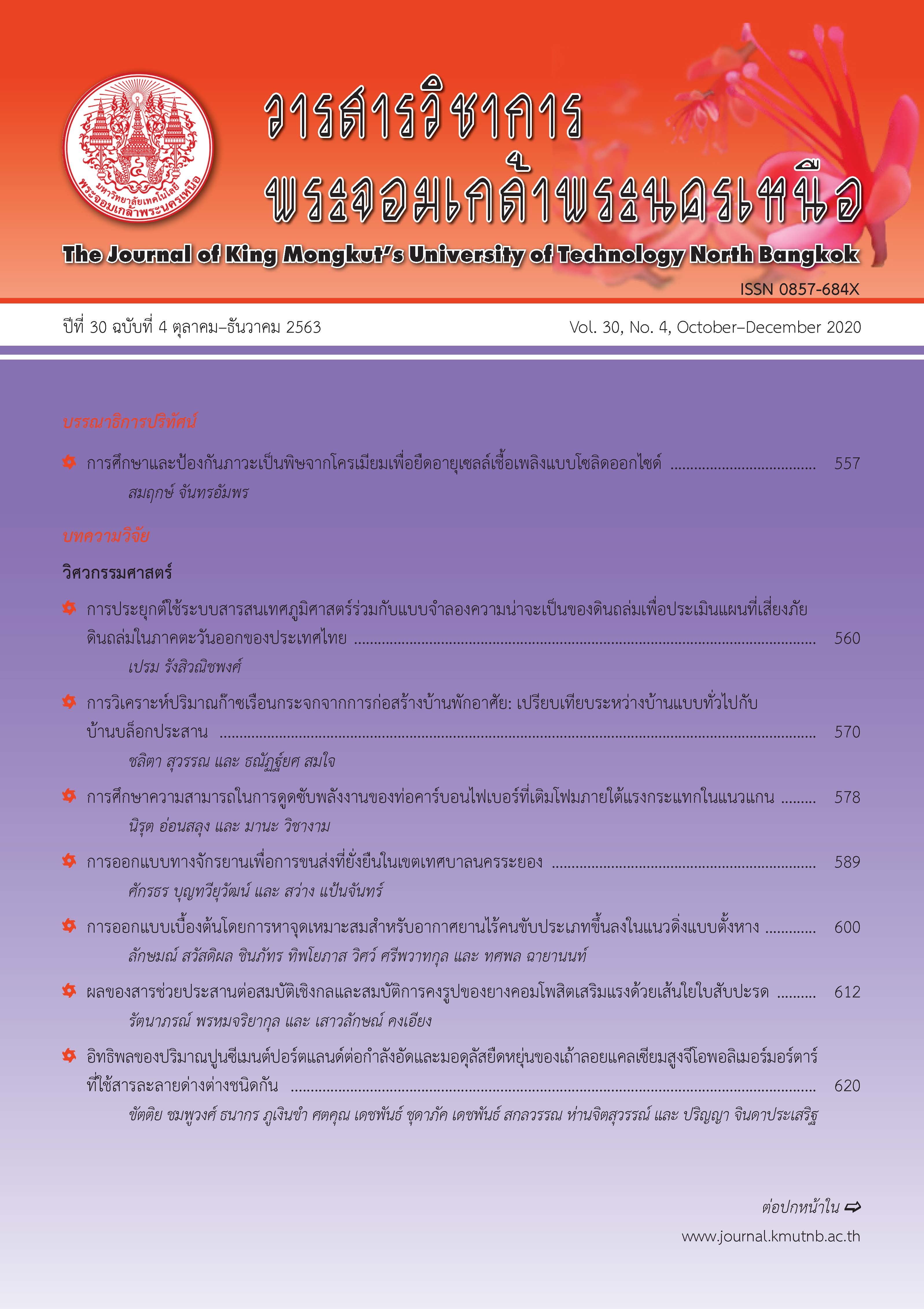Effect of Pretreatment and Drying Conditions on Quality of Dried Green Caviar Product
Main Article Content
Abstract
The process of quick-rehydrated dried green caviar seaweeds was examined. Green caviar was pretreatment by blanching in water and 0.09% magnesium carbonate solution (80°C) and soaking in 0.09% magnesium carbonate solution (room temperature) for 1 minute. The results showed that dried green caviar blanched in water had a high rehydration ratio and yielded a similar color to the fresh one. Then, blanched green caviar undertook osmosis treatment in a mixture of 40% sugar solution and a 10% NaCl solution. As results, the dried green caviar took less time to rehydrate and had a higher firmness, relatively similar to that of fresh green caviar. Finally, the effect of drying methods, tray drier (60°C, 10 minutes) and vacuum drier (50°C, 46 cm.Hg., 40 minutes), was investigated. The results demonstrated that the firmness of rehydrated product undertaking the tray drying process was comparatively similar to that of the fresh green caviar.
Article Details
The articles published are the opinion of the author only. The author is responsible for any legal consequences. That may arise from that article.
References
[2] S. Munlum, “The development of playor (White fish sausage) production mixed with green caviars,” Dusit Thani College Journal, vol. 11, no. 2, pp. 17–30, 2017 (in Thai).
[3] P. Meesirisuk, Thai Cuisine from Edible Flowers for Transferring to the Public. Chon Buri: Rajamangala University of Technology Tawan-ok Publishing, 2010 (in Thai).
[4] S. Phoungchandang, Food Drying Technology. Khon Kaen: Khon Kaen University Publishing, 2012 (in Thai).
[5] W. Yuenyongputtakal and P. Noyphan, “Development of intermediate moisture ginger product enriched with physiologically active compounds from Gac fruit (Momordica cochinchinensis spreng) Aril using osmotic dehydration combined with drying,” Research Report, Department of Food Science, Faculty of Science, Burapha University, 2016 (in Thai).
[6] V. Rungsardthong, Fruit and Vegetable Processing Technology. Bangkok: KMUTNB Textbook Publishing Center, 2009 (in Thai).
[7] R. Ngamchum, “Development of intermediate moisture carunda fruit product using osmotic dehydration combined with vacuum drying,” B.Sc. research project, Department of Food Science, Faculty of Science, Burapha University, 2004 (in Thai).
[8] P. Tapbuntom and S. Chinnasarn, “Effects of one-step and two-step dryings on quality of kaffir lime leaves and lemon grass trunks,” Agricultural Science Journal, vol. 38, no. 6, pp. 135–138, 2007 (in Thai).
[9] A. Mohammadi, S. Rafiee, Z. Emam-Djomeh, and A, Keyhani, “Kinetic medels for colour changes in kiwifruit slices during hot air drying,” World Journal of Agricultural Sciences, vol. 4, no. 3, pp. 376–383, 2008.
[10] D. Thimthong and W. Bangsri, “Production of dried sea lettuce (Ulva rigida) as a health snack for school children,” B.Sc. research project, Department of Food Science, Faculty of Science, Burapha University, 2012 (in Thai).
[11] M. S. Rahman and J. Lamb, “Osmotic dehydration of pineapple,” Journal of Food Science and Technology, vol. 27, no. 3, pp. 150–152, 1990.
[12] A. I. Varnalis, J. G. Brennan, and D. B. MacDougall, “Proposed mechanism of high temperature puffing of potato. Part II. Influence of blanching and initial drying on the permeability of the partially dried layer to water vapour,” Journal of Food Engineering, vol. 48, no. 4, pp. 369–378, 2001.
[13] N. Rattanapanone, Food Chemistry. Bangkok: Odian Store, 2006 (in Thai).
[14] K. Chanshotikul, “Study of processing and modeling of kaprao leaves drying,” M.S. thesis, Department of Food Technology, Faculty of Technology, Khon Kaen University, 2002 (in Thai).
[15] S. Chinnasarn, W. Yuenyongputtakal, and N. Krasaechol, “Effect of pretreatment and drying method on quality of Indian marsh fleabane powder product,” Agricultural Science Journal, vol. 45, no. 2, pp. 101–104, 2014 (in Thai).
[16] A. Derossi, T. D. Pilli, and C. Severini, “Reduction in the pH of vegetables by vacuum impregnation: A study on pepper,” Journal of Food Engineering, vol. 99, no. 1, pp. 9–15, 2010.
[17] M. Chafer, C. Gonzalez Martinez, B. Fernandez, L. Perez, and A. Chiralt, “Effect of blanching and vacuum pulse application on osmotic dehydration of pear,” Food Science and Technology International, vol. 9, no. 5 pp. 321–328, 2003.

